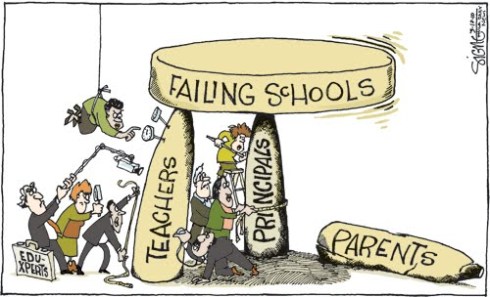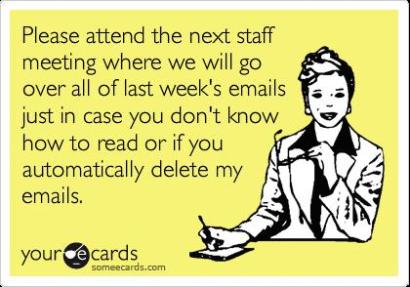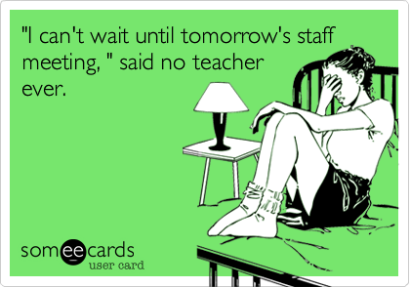September 1, 2012
Day 10 as an administrator… I am having very mixed feelings about not being in the classroom when school starts on Tuesday morning. I have been thinking non-stop about how I can channel the energy that I used to use to get ready for my first day with 150 new students, into getting ready to now help the students outside of the classroom and through the teachers.
I have decided that I need to focus… I need to pick something and go with it! There is too much out there in education and I am so excited that I am having a hard time going through it!! So, I have decided to settle on student growth.
The term growth has been thrown around a lot the last few years with all of the education “reform” that has been pushed through legislation, especially here in the state of Michigan. Student growth is another way of saying student learning. According to a report by the Student Learning, Student Achievement Task Force of the National Board for Professional Teaching Standards,
“Student learning is the growth in subject-matter knowledge, understanding, and skills over time. In essence, it is an increase in achievement that constitutes learning. Central to this notion of learning as growth is change over time. Knowing whether student learning has occurred, then, requires tracking the growth in what students know and can do. It is only by comparing student mastery at successive points in time that the nature and extent of learning can be gauged. Student learning is also reflected in a broad array of outcome measures, including attendance, participation, engagement, and motivation.”
In the state of Michigan, in 2013-2014 25% of a teacher’s evaluation is to be based on student growth, 40% in 2014-2015, and 50% in 2015-2016. The Governor’s Council was slated to come out with a recommendation of an Evaluation Tool in April of 2012. It is not out yet, and I am not sure when – or if – it will be out… No one is quite sure what this evaluation tool will look like, but Legislation specifies that the Governor’s Council will recommend “a student growth assessment tool” that is a value added model, includes at least a pre- and post- test, can be used in all content areas and grades, including currently non-tested grades and content areas, and meets all requirements for students with disabilities.
Teachers want their students to learn, they want their students to grow, but it is not always an easy thing to show. Teachers struggle daily with their lesson plans and assessments so that they can see the extent of what students know, and what they can do to help struggling students catch up. Teachers do this daily. If you asked a teacher, “What has Johnny learned this semester?”, the teacher would be able to give you a detailed answer that does not involve “they learned how to answer 20 multiple choice questions correctly.” The answer would be complicated, breaking down each student into their learning styles, their skill sets… As an administrator, these precise details are the things I want to hear from my teachers, this is what I want to know… But of course this would not satisfy the state…
So I was laying around last night trying to figure out how I can help my teachers show growth among all students in their classrooms. I have some ideas, some things I have done as a teacher, some things from the internet. If it were up to the state (scary – but it could happen), it would all be based on a standardized test! I decided to hit the “twittersphere” and make an attempt to contact the one person in the country that I see as the “superman” of education… Diane Ravitch… I sent out a tweet

An hour later I woke up to the sound of the twitter notification on my phone and thought in my head, “Did she tweet me back?!?!?” I was as excited as a child that has just received a letter back from Santa Claus as I grabbed my phone to look, and YES – Diane Ravitch herself had tweeted me back!!

I reread it 100 times, again like that same child who just can’t believe that their hero has acknowledged and responded to them. I started to realize that all that I was focusing on and stressing about really was just that simple… anything but test scores. Now, to those of us that live and breathe education, this is not something new, we know that those standardized tests that the lawmakers love so much are not what is going to show us that are students are learning. After reading this tweet though, things just became so clear to me, not just don’t use test scores, but ANYTHING but test scores. I would go so far as to say try everything but test scores… Teachers should do everything that they can to see what their students are learning and how much they have grown.
So, I am going to throw some things out there that are possibilities, and I hope that we can get a good list going of different measurements of student growth that will work in our classrooms, drive our instruction, improve our practice, and improve the education of all of our students…
1.) Check out www.threering.com. This was a direct result of my Diane Ravitch tweet. She retweeted my question and one of her followers hit me up with this. I played around with it for a little bit and it seems like a really cool tool. It works with your iphone or ipad. It is an app, but you can set everything up on the website.
2.) Write cumulative assessments and use some items covering the same content over and over to see improvement. For example: last year on the first test in algebra 1 there were about 10 questions covering material that I knew was on the final exam. Students did not do very well on these questions, so I retaught and retested that material. The questions were different but covering the same topic. I just looked at those 10 items for growth. This was a very small idea, but it definitely showed growth among the students. You could do a lot with something like this, make some higher level, multi-part questions and continue to give over time, and see how the responses improve throughout the course. OR, you could just take one higher level question on an assessment and give it more than once over the course of the semester.
3.) Portfolios – This is a really great way to show individual student progression. For an English teacher, a writing sample from the beginning of the year, then at various other points throughout the semester will track progress. This could work in any subject, and is a much more authentic tool than a single test.
4.) Student reflection – Choose an important topic in your subject and have the students write a reflection about it. At another later point in time give them this same topic with the same instructions and have them reflect again. The possibilities for showing teacher growth in this manner are tremendous.
Ok… I’ve gotten it started! Let’s see what we can come up with!!! Here is the link to the google doc with these first four listed on it. Feel free to add productive and helpful ideas! I can’t wait to see what happens!
https://docs.google.com/document/d/1Kt7yAnaooMzZbiCLRWTNO6xRhhVQQFBo8-tE7UiYeHc/edit














